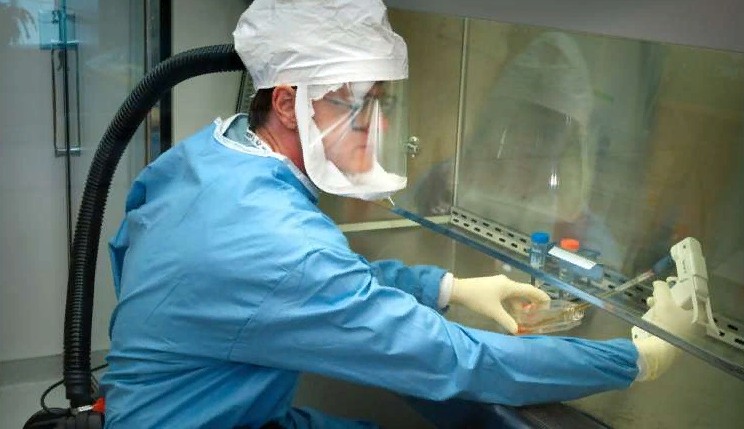Health experts, like many Americans, are frustrated by the CDC’s’messaging problem.’
Americans dealing with the COVID-19 pandemic during the most recent virus outbreak believe that frequent changes in regulatory guidelines make life difficult.
Many people are unsure whether they should quarantine or isolate after the Centers for Disease Control and Prevention reduced isolation recommendations from 10 to five days. How long will you be there? To test or not to test?
They aren’t the only ones who are frustrated.
Since the start of the pandemic, prominent health experts have defended the CDC and its science-based judgments, but now many are criticizing the agency for poor communication.
«Until the CDC admits it has a message problem, it won’t be able to do anything,» said Peter Pitts, president and co-founder of the Center for Medicine in the Public Interest, a patient advocacy group. «What Americans don’t comprehend is that they don’t know what they need to know. As a result, they may not always be able to do the correct thing as quickly as they would like.»
What happened to science?
According to health experts, the agency’s «message problem» may be separated into three basic difficulties, the most serious of which is inconsistent transparency.
According to Thomas Hipper, associate director of Drexel University’s Dornsife School of Public Health’s Center for Public Health Readiness and Communication, «the CDC must back up its choice with clear facts and communicate the research so the general public can understand it» on every policy update.
«The modification (was) inspired by evidence revealing that the bulk of SARS-CoV-2 transmission occurs early in the course of illness,» the CDC said in a statement announcing the updated isolation requirements on Dec. 27.
Officials, according to Hipper, failed to expressly mention the science.
«Simply announcing the change and attempting to explain it without a clear rationale exposes you to scrutiny,» he said. «Letting the public know the flaws in the decision helps justify why it was taken.»
The CDC did not reply to a request for comment from USA TODAY.
The recommendations were based on «over 100 research collected over the past two years,» according to CDC Director Rochelle Walensky, who spoke to the media Friday and again Monday during a Senate committee hearing.
The damage had already been done, according to Hipper.
He explained, «We observed the policy choice was communicated, and then there was a vacuum.» «Without such information, the decision was being picked apart.»
More possibilities to speak directly to the news media, according to Hipper, would be a key component of transparency.
Walensky has been chastised by several health experts for failing to include other CDC scientists in media briefings. Since taking office, the CDC director has conducted «over 80 briefings,» although the majority of them have been with White House officials.
The CDC’s news conference on Friday was the first in months to be hosted solely by the agency, with other CDC specialists on hand to answer questions. Walensky stated that she intends to perform more research.
«The press is great at finding flaws in the policy they’ve put together or raising issues,» Hipper added. «It’s vital to have access to agency experts who people want to hear from and trust.»
There are no stakeholders engaged
The second issue contributing to the CDC’s message problem, according to health experts, is that local health departments and national groups feel excluded from the agency’s decision-making.
According to Dr. Julie Morita, executive vice president of the Robert Wood Johnson Foundation and a member of the CDC director’s advisory council, not incorporating these stakeholders in the debate could lead to additional criticism and distrust.
The American Medical Association, one of the country’s most powerful physician organizations, issued a strong statement criticizing the CDC’s isolation and quarantine rules, calling them «confusing» and «counterproductive.»
«According to the CDC’s own explanation for reducing general public isolation periods, an estimated 31% of patients are still infectious 5 days following a positive COVID-19 test,» said AMA President Gerald E. Harmon.
«With hundreds of thousands of new cases reported every day and more than a million positive cases reported as of Jan. 3, tens of thousands—possibly hundreds of thousands—of people could return to work and school contagious if they follow the CDC’s new guidelines.»
This, according to the organization, might be addressed by mandating a negative coronavirus test before releasing a patient from isolation, something the CDC did not include in their guidelines.
«The American Medical Association is a stakeholder who should be monitored by public health as new recommendations is released,» Morita added. «If they’re given this ahead of time, they may become a part of the communication engine rather than criticizing what’s being said.»
The CDC guideline has also been met with suspicion by several state health officials.
The Michigan Department of Health and Human Services stated that it would not implement the recommendations until it had studied «the supporting evidence… while awaiting additional information… specifically for special groups and in high-risk settings.»
«The omicron variant’s high transmissibility underlines the need of Michiganders following COVID mitigation methods that have been shown to limit transmission and risk,» according to a statement released Dec. 29.
According to Hipper, the divergence may have been averted if the CDC and state health departments had better communication and transparency.
He stated, «We all want to be on the same page here.» «State and local communication officials need to be able to acquire that clear instruction from the CDC so they can transmit the same message.»
‘It’s fine if you don’t always get it perfect,’ says the author
Finally, experts say the CDC has exposed itself to accusations of lack of responsibility.
Although the CDC has stated that the science of the pandemic is continuously growing, health professionals have stated that the organization still has to confess its errors in this area of inherent uncertainty.
«It humanizes this effort, and it goes a long way toward regaining trust,» Hipper added. «There’s nothing wrong with admitting, ‘Hey, we didn’t get everything perfect, but we’re committed to getting it right as soon as possible.'»
During Friday’s briefing, Walensky attempted to do so, but Pitts said she fell short.
«She came out as incredibly defensive to me,» Pitts added, «and people turn off when they sense the person in front of the camera isn’t accepting responsibility.» «It was a squandered chance and a true teaching moment.»
It’s not easy to admit one’s flaws, according to Hipper, but people usually respond well to it, and it would help the CDC’s image.
He said, «It’s OK if you don’t always get it right.» «It’s something that the general public knows and values.»
The CDC does not operate in a vacuum. Experts acknowledge that the government’s pandemic strategy is dependent on other agencies, the private sector, and, ultimately, the American people.
«There’s no use in assigning blame… The CDC did not entirely cause the problem, and it will not entirely solve it «Pitts remarked. «It’ll take a collaborative effort.»
A grant from the Masimo Foundation for Ethics, Innovation, and Competition in Healthcare has helped USA TODAY cover health and patient safety. The Masimo Foundation does not contribute to the editorial process.






Be the first to comment on "Health experts, like many Americans, are frustrated by the CDC’s’messaging…"